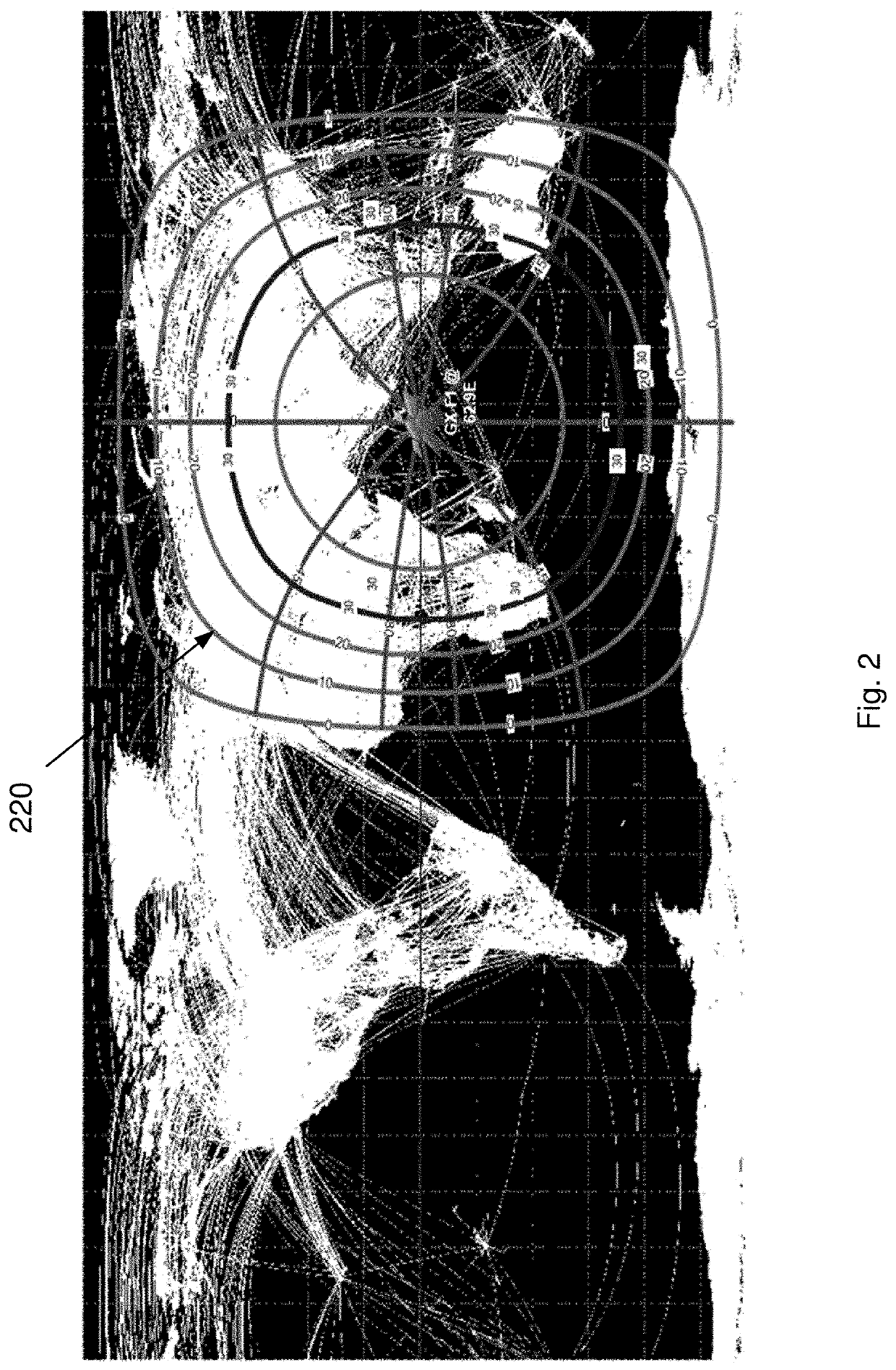Terminal Antenna Architecture
a terminal antenna and antenna technology, applied in the direction of antennas, antenna details, antenna adaptation in movable bodies, etc., can solve the problems of affecting the terminal operation, the antenna has no gain to support satellite link connectivity, and the planar phased array antenna is susceptible to “scan loss”, so as to reduce the loss of scan, the effect of reducing the size and high power consumption
- Summary
- Abstract
- Description
- Claims
- Application Information
AI Technical Summary
Benefits of technology
Problems solved by technology
Method used
Image
Examples
Embodiment Construction
[0023]Wireless communications utilize antennas to transmit and receive signals between different devices. For example, a satellite communication system for commercial and / or non-commercial applications (e.g., aviation) may comprise antennas mounted on a remote station such as a fixed or mobile device (e.g., an aircraft), a satellite, and / or a ground earth station (GES) (e.g., a Hub station). The antennas may provide for reception and transmission of the electromagnetic signals communicated between, for example, the remote station(s) and / or other remote station(s) and / or Hub station(s). A variety of remote antenna types may be used including, but not limited to: steered flat panel antennas (e.g., mechanically steerable passive arrays and / or electronically steerable active arrays), reflectors and / or reflector arrays, hybrid steering antennas (combining mechanical steering with electronic steering), and electronic steerable antennas such as phased array antennas (PAA) which may include...
PUM
 Login to View More
Login to View More Abstract
Description
Claims
Application Information
 Login to View More
Login to View More - R&D
- Intellectual Property
- Life Sciences
- Materials
- Tech Scout
- Unparalleled Data Quality
- Higher Quality Content
- 60% Fewer Hallucinations
Browse by: Latest US Patents, China's latest patents, Technical Efficacy Thesaurus, Application Domain, Technology Topic, Popular Technical Reports.
© 2025 PatSnap. All rights reserved.Legal|Privacy policy|Modern Slavery Act Transparency Statement|Sitemap|About US| Contact US: help@patsnap.com



